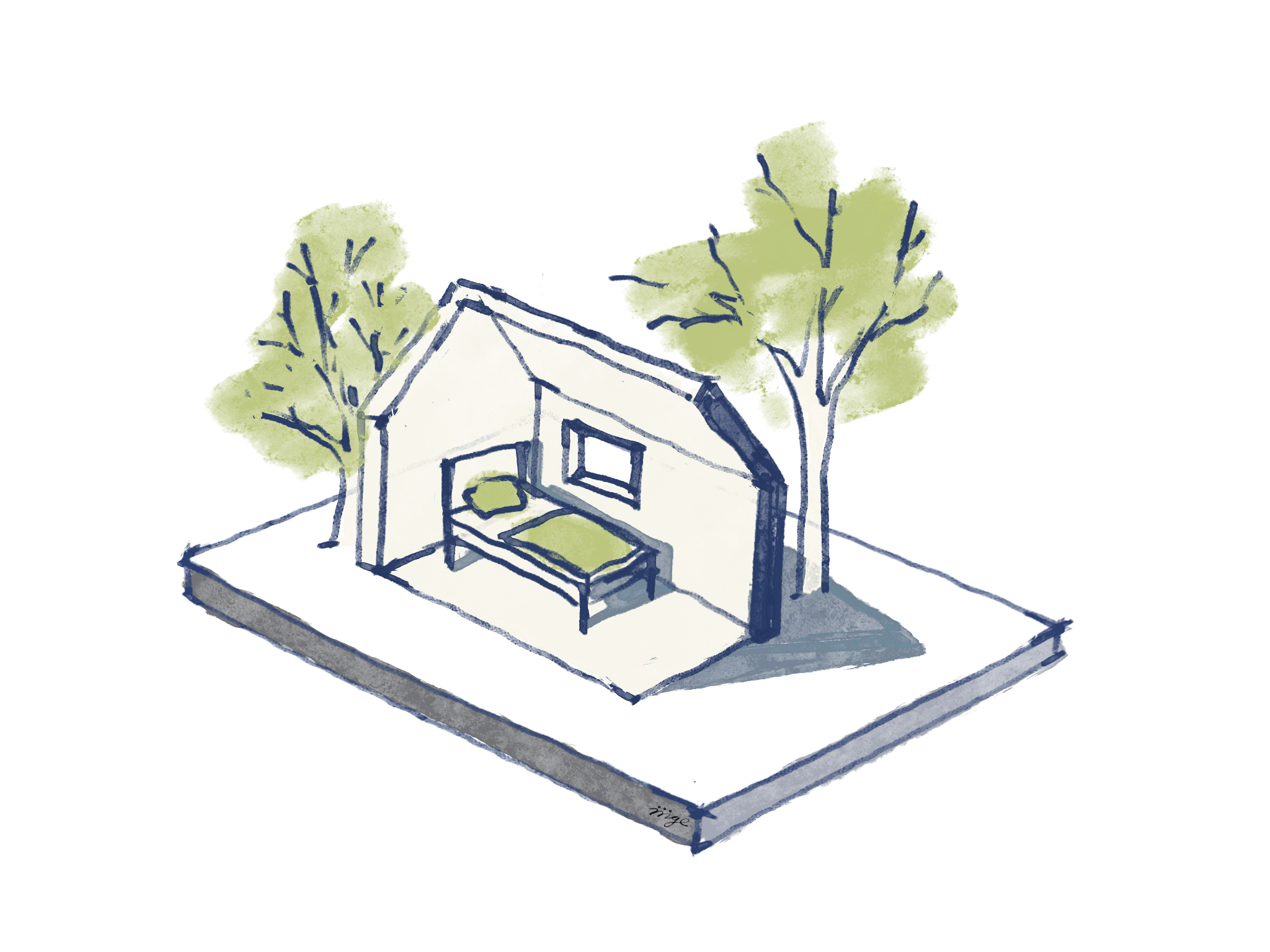Abstracts & Papers
session 2
Occupants wellbeing and comfort (case study and simulation)
Comparative Analysis of Thermal Comfort Surveys with CFD Simulations
Hassan Safdar Malik, Waqas Khalid, Absaar ul Jabbar, Adnan Munir and Adeel Waqas
Owning to rapid urbanization and global raising temperatures, air conditioning utilization is increasing at a rapid rate. Where efforts are in line to improve efficiency of air conditioning units, effectiveness for the same also needs to be studied. The International standards for thermal environments extensively refer to the Predictive Mean Vote (PMV) method to measure the effectiveness of any air conditioned environment for thermal comfort evaluation.
In this study, PMV calculated from objective assessments based on 41 unique responses has been compared with subjective assessments and computational fluid dynamics (CFD) simulations for offices and workplaces of an educational Building in Pakistan. Comfort temperatures are also calculated from all three approaches for comparison with established studies and recommendations are brought forth for improved CFD simulations for calculation of PMV.

#Thermal Comfort #Workplaces #CFD Indoor Simulations #Thermal Sensation Vote #Official Buildings
Simulation of occupied buildings, measuring and modelling human behaviour in buildings
Residential Heat Pump Operation in The UK (LATENT Project) And Deferral Situation with Air Conditioning Operation in Indonesia
Berth Phileinta Ginting
Building energy contributed around one-third of the worldwide energy demand and 15% of carbon emissions in 2020, which is crucial in the energy decarbonization prospect. The different climate of countries globally determines the used appliances to assess the thermal comfort in the building; covers are mostly heating, cooling, and dehumidification. Electrification with renewables and building archetype arrangements in building energy utilization contribute to reducing carbon emissions. The paper aims to evaluate the energy performance of differential residential heat pumps and air conditioners in the different areas of study to optimize the energy consumption in the UK and Indonesia by considering the archetype and separate local climate in regions within the countries by using the optimum thermal comfort adjustments. The research involves Climate Consultant 6.0 and TRNSYS 17 software analyses to simulate the building retrofit configurations. The design simulations examine the temperature and energy behavior in the residential retrofit to achieve the efficient thermal comfort standard setpoints on designed building parameters as specified in the actual conditions. The evaluation of sustainability aspects of the system involves the cost and carbon analyses to compare the existing fossil fuels performance with considering the projected forecast for the nations’ targets in 2025 and 2060.

#Heat Pump #Air Conditioner #Thermal Comfort #Archetypes #Energy Consumption Intensity
Assessing occupants wellbeing and comfort
Impact of Restorative Spaces on the Wellbeing of Emergency Unit General Practitioners in Indonesian National Referral Hospital
Nisrina Meidiani and Anna Mavrogianni
Healthcare workers (HCWs) in hospitals are expected to maintain their performance despite their taxing workloads. This circumstance calls attention to providing appropriate restorative space and helping them maintain their wellbeing during their shifts. This study set out to explore the relationship between an existing restorative space and emergency unit General Practitioners (GPs) wellbeing in National Referral Hospitals in Indonesia: Dr Cipto Mangunkusumo National Central Public Hospital, H. Marzuki Mahdi Psychiatric Hospital, and Sulianti Saroso Infectious Disease Hospital. Existing literature indicates that a hospital with a restorative environment will require four architectural elements: proximity, biophilia, privacy and a sense of belonging. Interviews with Indonesian emergency unit GPs will determine if the principles will be applicable in Indonesia. The present study highlights that control over privacy, closer proximity, access to nature, a sense of belonging and easy access are the architectural elements preferred by the GPs in a restorative space. These findings will be beneficial in initiating a recommendation for a restorative space design for the HCWs in Indonesian hospitals. However, it is essential to note that this study is limited to three hospitals at the national level with a small number of participants. Thus, further research would provide more fruitful results.

#restorative space #hospital #healthcare workers #wellbeing #emergency unit
Assessing occupants wellbeing and comfort
An experimental investigation of how human activities affect the behaviour of indoor airborne particles
Yiming Qi, Spyros Efthymiopoulos and Hector Altamirano
The outbreak of COVID-19 in 2019 triggered soaring public concern about respiratory infectious diseases. The motion of virus-carrier particles has also been researched by academia due to its susceptible characteristics caused by various factors. Particle behaviours can be influenced by human activities inducing effects, which can be regarded as an opportunity to support the development of efficient strategies for coping with infectious diseases. By performing simulation experiments, this paper investigated how door opening, human walking, and high relative humidity influence the behaviour of indoor particles (PM0.5 and PM2.5). Particles were monitored at four positions and three heights. The results show that door opening and human walking significantly affected the behaviour of particles, with a significant rise in the number of particles at all positions. Impacts also varied from activity to activity, with only opening the door having the most significant impact on the indoor particle counts. The effect remained in the high relative humidity condition. However, both an increase and a decrease in particle count existed regarding different activities.

#Particle behaviour #indoor particle #infectious disease #human activity #relative humidity
Assessing occupants wellbeing and comfort
Occupant Behaviours and Environmental Preferences in Home-Office Environments Versus Conventional Office Environments; Reflections from The Pandemic.
Barah Rababa
This pandemic has changed our work styles and our everyday interactions with the built environment. This paper focuses on differences in thermal comfort perceptions and behaviours between home-based and conventional office settings and discusses the consequences of its findings on domestic energy use in the UK in the context of extreme circumstances and beyond. Data were collected using a web-based questionnaire and online follow-up interviews. The 106 responses to the questionnaire captured the frequency of some adaptive behaviours. The in-depth interviews revealed a wide range and diverse adaptation strategies that people exercise when working from home, while these coping strategies were very limited in conventional offices. Moreover, discussions with energy and built environment experts shed light on the potential implications of working from home. These implications could contribute to raising awareness of people of energy-efficient houses, this could be buying new energy-efficient properties, refurbishing houses, and installing innovative energy-saving measures. The findings of this study indicate that occupants were satisfied with working from home, and the main elements they prefer for a future home office are energy-efficient airtight windows and good ventilation. Participants tended to apply low-cost strategies, related to the heating routine and practices. For example, reducing thermostat temperature or the heating duration. Further research could usefully propose an energy-efficient home office with the technological and personal behaviours and the upgraded standards revealed in this study

#Post-pandemic #built environment #home-office #working from home #energy consumption #thermal comfort #thermal adaptation #heating coping strategies
Assessing occupants wellbeing and comfort
Design Strategies for Future Residential Buildings in Delhi, India
Bhawana Chaudhary
The construction industry is one of the primary contributors to the emission of greenhouse gases which are responsible for global warming and climate change. Changing climate is impacting the thermal performance of the buildings that leads to the use of mechanical cooling or heating which ultimately contributes to GHG emissions. This study aims to understand that the houses designed today will be comfortable to live in the next 100 years and proposes appropriate strategies that will be suitable for residential buildings in Delhi, India. To achieve the aim the present and future climate of the region is analyzed using the climate data provided by IPCC. The IPCC medium to high emission scenario is considered for the study. The recommended strategies are based on the literature review and climate analysis of the region. A residential building in Delhi is modeled in DesignBuilder software and the internal conditions are recorded for the building for the present climate, 2050, and 2080. The results show that mechanical cooling will be required for the majority of the time by 2080. Without cooling the building will not be comfortable to live in even with recommended strategies. The study also proposes renewable systems suitable for Delhi which can help in achieving net-zero.

#Climate Change #Thermal Comfort #Net Zero #Passive Strategies
Simulation of occupied buildings, measuring and modelling human behaviour in buildings




